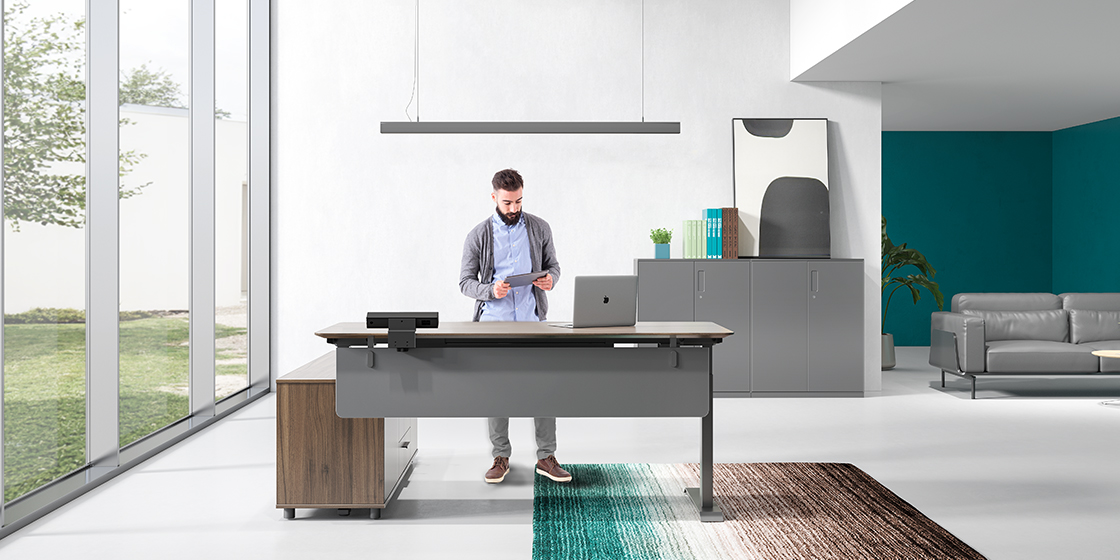
Proper posture and ergonomics are essential to a healthy workforce and to productivity and comfortability. You must learn to lower fatigue and discomfort for you to have a comfortable and productive day. Whether it is by optimizing your laptop setup, adjusting your typing posture, or the height of your office chair, do it keeping in mind that the smallest features of your working environment can affect your productivity and overall health.

Adopt The Most Ergonomic and Comfortable Typing Position
Just because you don't feel a strain or pain on your body after a long day working on your computer does not mean your posture is ideal. Make sure you are typing correctly by;
1. Adopting A Good Sitting Posture
How you sit determines the position of your hands and fingers when typing. Besides, poor posture can compress your thoracic area and prevent your diaphragm from opening up fully. This leads to low oxygen intake that can cause low energy levels and even migraines and the feeling of drowsiness in extreme cases.
Make sure your back is well-rested against the chair. You can use a lumbar pillow if the chair does not provide adequate support.
When you are seated, you need to look forward and have your computer screen at your eye level, looking directly into it without leaning forward. Leaning forward exerts lots of pressure on your vertebral discs, and this will strain your back.
Your legs should be at right angles on your knees when you sit to work. Therefore, make sure your feet are rested flat on the floor. If your legs are not long enough, or the chair is too high, use a footrest.

H2 Bifma Compliant Ergonomic Chair
2. Proper Arm Position
Do not have the keyboard too far away from you because you will have to extend your arms in order to type. At this typing position, you will not be able to work for long hours. Your arms will get tired very fast, and you will soon be taking a rest from work.
Have the keyboard closer to you to make sure your arm is in a very comfortable typing position. Again, there is no ideal position; workaround determining what works for you.
3. Proper Wrist Position
Having the keyboard at a position where it is higher than your wrist is a big mistake. You will find yourself having to extend your wrists, raising them above the keyboard level in order to press the keys. One hour of typing at this position will get you frustrated. You will not even be able to type as fast.
Try as much as possible to maintain a straight wrist as you type. This you can achieve by adjusting your seat height.
Get More Work Done with The Right Desk Setup
Your immediate surroundings can influence your productivity, performance, and job satisfaction. Your workspace design, right from your desk to the rest of the office (or home, depending on where you're working from), should be designed in such a manner that it facilitates and inspires you to do more work using minimum effort.
Consider these elements in your desk setup.

1. Indoor Plants
Sounds a little bizarre, right? Can plants really boost your productivity?
Well, plants will not help you do your work. A plant or two in your office or on your desk, however, could improve your overall happiness.
According to this study, indoor plants can reduce fatigue levels when you are working on something that requires so much attention. They bring office spaces to life and have a sense of tranquility all around them.
Plants are also responsible for cleaning the air, providing you with a fresh environment to work in. Choose indoor plants depending on how much space you have, your level of plant expertise, and the amount of natural light your working space gets. You can acquire plants such as sansevieria, peace lily, jade, among others.

2. Natural Lighting
The amount and quality of natural lighting in your office can affect your productivity. Working in a poorly lit room can cause eye strain and fatigue. Very harsh lighting is also not good for your well-being.
The best type of lighting for your ergonomic workstation is natural light. Set your desk next to a large window where there is plenty of natural light, but away from direct sunlight.
Natural light has a tendency of reducing anxiety and stress and boosting one's mood and morale. You will even be able to concentrate better and accomplish your tasks.
3. Experiment with Your Office Temperature
Freezing temperatures will negatively affect your productivity. Your hands may become cold, thereby affecting your typing speed, or no one likes a cold sweat through the day!
Study shows that when office temperature is increased from 68 to 77℉, errors can be expected to fall by 44%, while output can be expected to increase by an incredible 150%. The highest productivity level occurs around 71.6℉.
This study may not apply in your situation. Try experimenting with the temperature in your working space by adjusting the thermostat, or using a fan if your workspace is too warm until you attain your ideal working temperature.
Conclusion
Your posture and working environment can subtly affect your productivity and comfort at work. In the long run, you may find yourself feeling less fulfilled and unhappy with your work. Check on such little things as your office temperature, your wrist position when typing, and your sitting posture. They will boost your mood and comfortability, making your work more productive, fulfilling, and enjoyable.